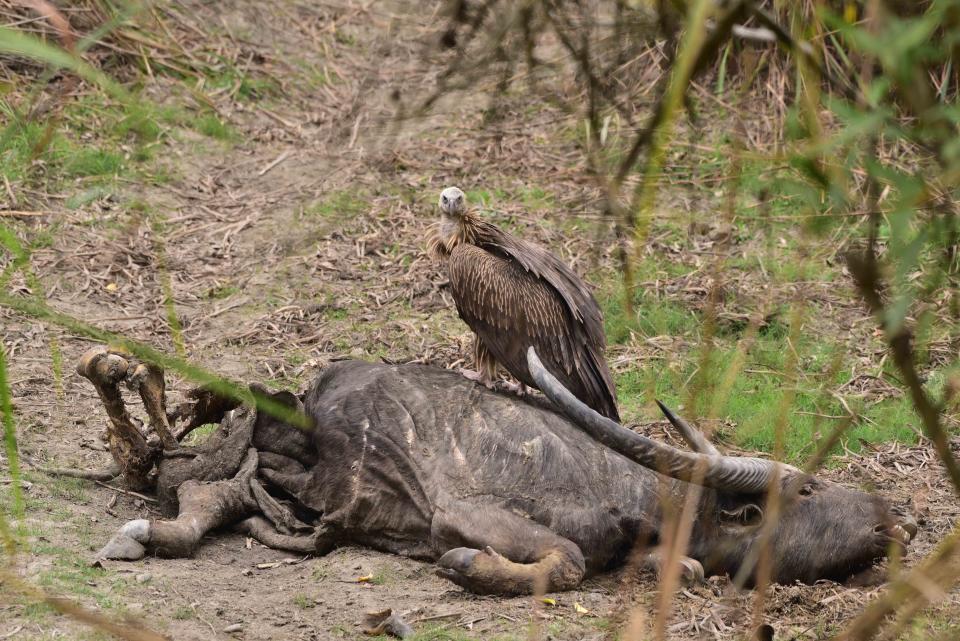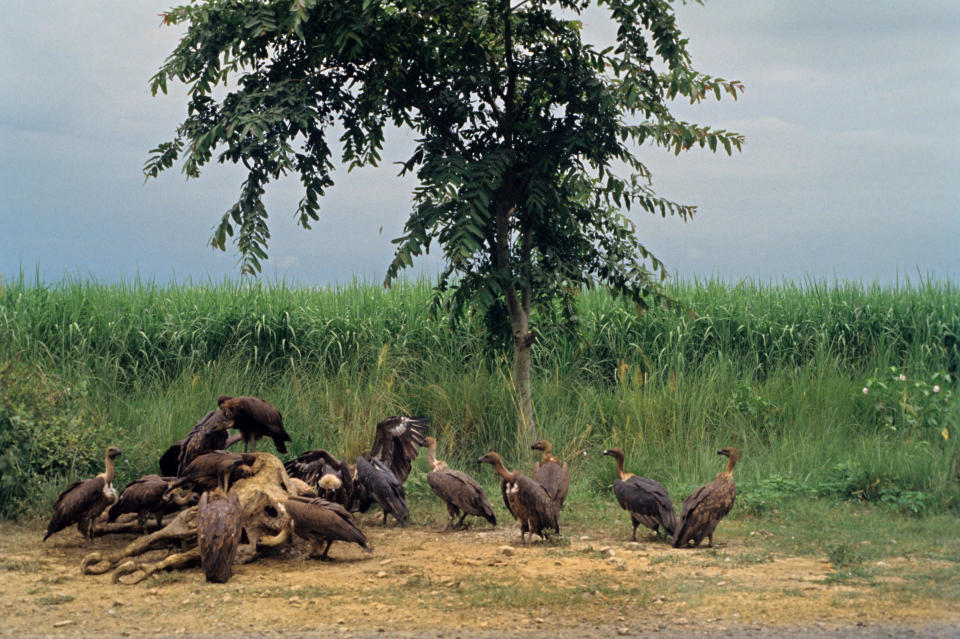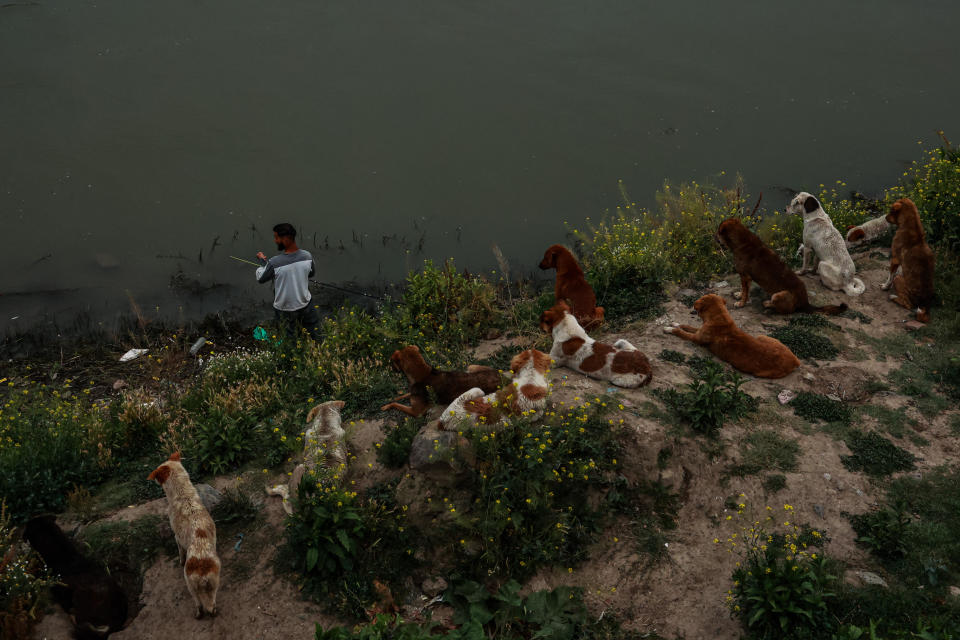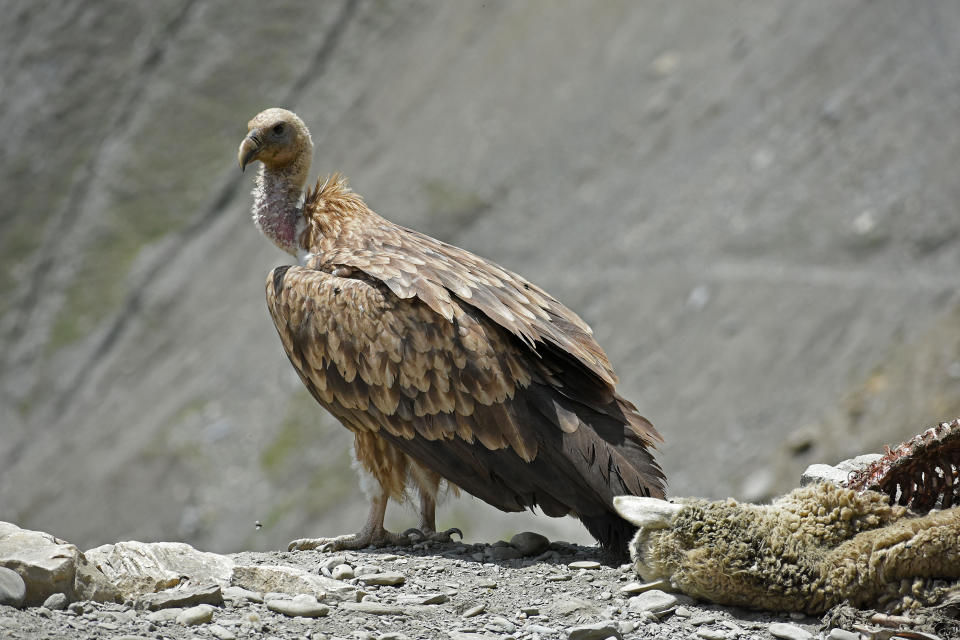New Delhi — Scientists say the Indian farmers’ eager use of painkillers on their livestock in the 1990s led to the unintended deaths of half a million people and huge economic losses — not from harming livestock, but from the loss of millions of vultures, scavengers that traditionally ate the remains of animals before they could rot and become pathogens.
In the early 1990s, a painkiller called diclofenac was lifted from patent, making it cheap and widely available to India’s vast agricultural sector. Farmers use it to treat a wide range of livestock ailments. But even small amounts of the drug are deadly to vultures. Since its widespread use began in India, the domestic vulture population has plummeted from a staggering 50 million to just a few thousand — and according to a study published by the American Economic Association, the impact on humans has been monumental, reflecting the critical role the scavengers play.
Vultures have been a crucial part of India’s ecosystems for centuries. According to the authors of the study, titled “The Social Costs of Keystone Species Collapse: Evidence From The Decline of Vultures in India,” the large, domestic birds are a “keystone species” — one that plays an irreplaceable role in an ecosystem.
They are the only scavengers that feed entirely on carcasses, and they do so extremely efficiently, devouring the remains quickly and leaving little behind to spread disease. The study authors say that India’s vultures typically ate at least 50 million animal carcasses each year before their population was decimated.

In doing so, they prevented the dead farm animals from rotting and the deadly bacteria and other pathogens that thrive in carcasses from being transmitted to humans.
“In a country like India, where it’s forbidden to eat beef, most cattle end up as carcasses,” Anant Sudarshan, a senior lecturer in economics at the University of Warwick in England who co-authored the study, told CBS News. “Vultures provide an incredible disposal service for free. … It takes a group of vultures about 45 minutes to turn a cow carcass into bones.”
The vultures’ large appetites also served to control the populations of competing scavengers, such as feral dogs and rats, which can transmit rabies and a host of other diseases.
In 1994, farmers began giving diclofenac to their cattle and other livestock. The drug caused kidney failure and death in vultures that fed on the carcasses of animals given the painkiller, and the birds’ population shrank from 50 million to just 20,000 over the next decade alone.
With no vultures to do the work, farmers began dumping their dead livestock into local waters, which led to water pollution and was another way for pathogens to reach humans.


Sudarshan and study co-author Eyal Frank, an environmental economist at the University of Chicago Harris School of Public Policy, examined the impact of the drastically reduced vulture population on human health by mapping vulture habitats with health data from more than 600 districts in India. They said their research shows that 100,000 human deaths per year between 2000 and 2005 could be linked to the declining vulture populations.
It also mentions the economic losses they estimate at $69 billion per year, largely due to premature human deaths caused by the decline in the scavenger population.
These deaths, according to their research, were caused by the spread of diseases that would have mitigated a thriving vulture population. The population of stray dogs, and with it the spread of rabies, also increased during this time, as did the amount of bacteria measured in many local water sources.
“India is now the largest centre of rabies “There are more wild dogs worldwide than ever before because the feral dog population has increased dramatically,” Sudarshan told CBS News.


Without a major increase in the vulture population, the spread of diseases and resulting deaths will only increase in the coming years, the study authors say. Health care costs will also increase.
India banned diclofenac for veterinary use in 2006, but Sudarshan said the ban needs to be enforced much more effectively. He and Eyal have called for more conservation funding to boost vulture populations, but they have warned that even with a major effort by the Indian government, it will take at least a decade for the species to recover to the required numbers because they are “slow to reproduce.”
As an alternative to bringing back the vultures, Sudarshan said India could build a network of incinerators across the country. However, the estimated cost of doing so is about $1 billion a year. Moreover, they would consume a huge amount of energy and cause significant air pollution, which is already a major problem for India.
“So it makes more sense to reintroduce the natural way of dealing with the millions of carcasses that India produces every year,” he said.
And he said work needed to begin urgently because “vultures started dying in the 1990s. India did nothing for 30 years.”


The government spends about $3 million a year on save india’s native tigersSudarshan said vultures may be less attractive to tourists, but there is a broader question about “the basis of our conservation policy.”
“Our paper shows that the cost of losing it [vultures] “It’s about $69 billion a year, which is far more than the benefits that the tiger brings,” he said, adding: “We need to think from a cost-effectiveness and growth perspective about how we select species to protect.”
“Understanding the role vultures play in human health underscores the importance of protecting wildlife — and not just the cute and cuddly ones,” said his co-author Frank. “They all have a job to do in our ecosystems that impacts our lives.”
Harris campaign releases video of Trump’s arrest photo
Harris race for White House in full swing
Paris Olympics Safety Concerns and Tips